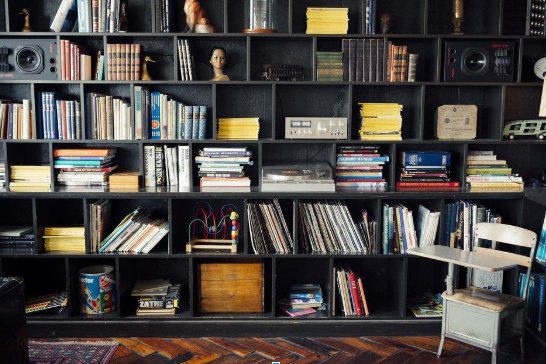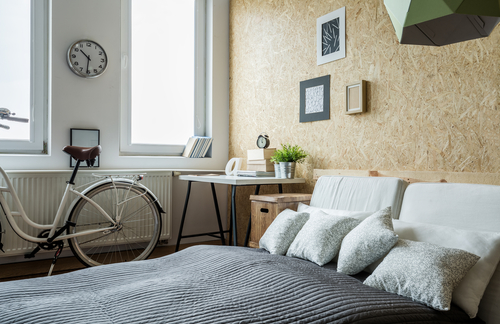If you live in a small home, you know how important it is to maximize every inch of space available. One of the best ways to do this is by installing shelves. Shelves not only provide additional storage space, but they can also add style and personality to your home.
Shelving solutions can be a lifesaver, but common mistakes can make your small space feel cluttered and cramped.
Mistake #1: Choosing the Wrong Type of Shelving
A common mistake people make when it comes to shelving solutions is choosing the wrong type of shelving. Many different types of shelving are available, including floating shelves, corner shelves, ladder shelves, and more. Each type of shelving has its advantages and disadvantages. Thus, choose the right type for your space.
Solution: Consider your storage needs and the layout of your room when choosing the type of shelving. If you have a lot of books or heavy items to store, a sturdy bookshelf, ladder shelf, or a longspan storage solution may be the best option. Floating or corner shelves can help you make the most of your wall space if you have limited floor space.
Mistake #2: Not Measuring Properly
Another mistake people make when shelving solutions is not measuring their space properly. Measuring the height, width, and depth of your wall space is important to ensure that your shelving unit fits perfectly. If you don’t measure properly, you may end up with a unit that is too big or too small for your space. This can lead to wasted or cluttered look space.
Solution: Take accurate measurements of your wall space before purchasing a shelving unit. Don’t forget to measure the height, width, and depth of the space. It will help you choose a shelving unit that fits perfectly in your space.
Mistake #3: Overloading Your Shelving
Another mistake people make when it comes to shelving solutions is overloading their shelving. While filling every inch of your shelving unit may be tempting, overloading can lead to a cluttered look and even be dangerous if the unit is not sturdy enough to hold the weight.
Solution: Be mindful of the weight limit of your shelving unit and avoid overloading it. Consider using lightweight decorative storage boxes or baskets to help keep your items organized and to prevent overloading your shelves.
Mistake #4: Neglecting Aesthetics
While functionality is important in shelving solutions for small homes, neglecting aesthetics can make your space feel cluttered and uninviting. Choosing the wrong color or style of shelving can clash with your existing décor and make your space feel disjointed.
Solution: Choose shelving that complements your existing décor and enhances the overall aesthetic of your space. Consider your shelving unit’s color, style, and material and how it will fit with your existing furniture and décor.
Mistake #5: Not Using Vertical Space
Many people fail to use their vertical space. When you’re limited on floor space, using your walls to their full potential can help you maximize your storage options.
Solution: Consider using tall bookshelves or ladder shelves to use your vertical space. You can also install floating shelves higher up on your walls to store items that are not used as frequently.
Mistake #6:Cluttering the Shelves
Shelves can quickly become a catch-all for random items, making the room feel cluttered and disorganized. Be intentional about what you store on your shelves to avoid this mistake.
Solution: Choose items that are both functional and aesthetically pleasing. Consider using baskets or containers to organize smaller items, and don’t be afraid to leave some empty space on the shelves to create a sense of openness and airiness.
Mistake #7: Not Considering Accessibility
Accessibility is another important factor to consider when it comes to shelving in small homes. If you can’t easily access the items you need, your shelving solution is not practical.
Solution: Install shelves at a height that is easy for you to reach, and consider adding pull-out drawers or baskets to make it easy to access items stored in the back. In essence, accessibility is about maximizing the use of available space and ensuring that items are conveniently reachable.
Tips for Choosing the Right Shelves
In addition to avoiding the common mistakes outlined above, there are a few tips to remember when choosing shelves for your small home. Some things to consider include:
Material: Shelves can be made from various materials, including wood, metal, and plastic. Consider each material’s durability, weight capacity, and aesthetic appeal before installing shelves.
Adjustable vs. fixed: Some shelves are adjustable, allowing you to move them up or down as needed. It can be helpful if you plan to store items of different sizes on the shelves. However, fixed shelves can be more stable and secure.
Functionality: Consider what you’ll be storing on the shelves and choose a style that suits your needs. For example, if you’ll be storing books, you might want deeper shelves than if you’ll be storing small decorative items.
Style: As mentioned earlier, it’s important to choose shelves that match the style of your home. Consider the color, finish, and design of the shelves before making your choice.
Final Thoughts
Choosing the right shelving solutions for small homes requires careful consideration and planning. Avoiding these common mistakes can help you maximize your limited space and create a functional and aesthetically pleasing environment.
Remember to measure your space properly, choose the right type of shelving, avoid overloading your shelves, and use your vertical space, to name a few. With these tips, you can create a beautiful, organized space that maximizes your storage options.








